
“The everyday is platitude (what lags and falls back, the residual life with which our trash cans and cemeteries are filled: scrap and refuse); but this banality is also what is most important. It brings us back to existence in its very spontaneity and as it is lived—in the moment when, lived, it escapes every speculative formulation, perhaps all coherence, all regularity.” — Maurice Blanchot
‘In his 1959 essay “La parole quotidienne,” Maurice Blanchot effectively describes the common experience of existence—that fact of being and living through one’s own everyday agenda, one’s own distinct condition, however relatively ordinary it may seem with respect to any other’s—as essentially always active in light of its fundamental indeterminacy. To participate with and experience the world, as we automatically and necessarily do as long as we are living, is to operate in an often undramatic yet nonetheless mobile progression through the present, towards something unstable and energized; the present—that tugging war that wavers between our recollection of the past and our anticipation of possible futures—is never a static thing. It’s always becoming something new. And yet those quotidian details that define the majority of our experience of reality are also the ones traditionally deemed the least worthy of narration, especially in cinema, because, as we are conditioned to enjoy it, it’s a medium in which significant things happen, one after another, according to a discernible logic that ultimately means something.
‘It’s not surprising that Blanchot’s terms have frequently been evoked in discussions of films by Chantal Akerman (most notably in Ivone Margulies’ 1996 book Nothing Happens), and they are comparably germane with regards to the notoriously evasive films of German filmmaker Angela Schanelec. There’s a sizeable difference, though. Whereas Akerman’s films mimic our experience of the everyday by immersing us in complete presentations of those tasks, behaviours, and spaces that define a milieu—all concrete representations of moving and thinking through time, in real time—Schanelec evokes our desires for moving beyond reality’s uncertainties and banalities, arousing our curiosities about the totality of an experience or a character’s psychology by presenting us with narratives that elide the details, the camera angles, or the words that might deliver us to somewhere or something that is beyond the ordinary. Like Godard, Schanelec presents us with only enough narrative so that we feel our desire for narrative, and, as has already been thoroughly and convincingly argued by Berlin School super-scholar Marco Abel, she places us in this liminal state from the first frame to the last, by obfuscating her characters’ attempts to communicate with one another. (“I don’t understand,” usually uttered in response to someone’s earnest effort to articulate their inner turmoil, is almost certainly the most frequently spoken line of dialogue in her movies.)
‘The depiction of characters failing to communicate, though, is only part of the strategy. As was evident from the very first sequence of her first feature, the 47-minute dffb graduate thesis I Stayed in Berlin All Summer (1993), Schanelec’s films demonstrate her preference for abstracting cinematic communication to the viewer as well, stunting the flow of narrative information via highly selective framing, discordant matches between sound and image, and precisely measured elisions of and deviations from the ostensible plot. In the first minutes of I Stayed in Berlin, a woman’s voiceover, spoken atop an imageless, monochromatic grey screen, describes the dispirited thoughts and feelings of a woman who is stalking a man (who she may or may not know) around town. At some point shortly after the title card shows up on that grey screen, there is a cut to a woman (acted by Schanelec) typing at a typewriter, suggesting that what we’re hearing is her internal monologue as she presses these words to paper. That probable resolution to this initial mystery is thrown into doubt, though, when the next cut shows us another, different woman pensively lying in bed somewhere else, the voiceover—still going—now calling out all the mundane tasks and events on the person’s to-do list. Is this woman the source of these words we’re hearing? Or are these words describing her story? (And if so, will we now watch this story play out, or are we picking up where the voiceover account stops?)
‘After further complicating this conundrum with an additional set of cutaways—first taking us back to the writer (who is now no longer typing but instead changing her shirt), then returning to the woman in bed—the voiceover drops out and gives way to a new audio track. This one, which is seemingly diegetic (at least, we now hear room tone), features the voice of a man (offscreen) who is discussing a painting acquisition with another man (also offscreen). At the end of their conversation, one of them walks into the room where the woman lies in bed (though he remains offscreen) and begins a dialogue with her, wherein she asks him what’s on the painting—that is, asks him for an image that might animate or excite her interest into his business—only for him to deny her request, teasingly replying, “Oil paint.” The man leaves while the other stays, and the woman, who we learn is named Maria, announces a scheme, perhaps jokingly but perhaps not, to steal the painting that they were just discussing.
‘Thus, in the span of five minutes, Schanelec introduces us to no less than three possible narrative trajectories that her film might follow, all of them proposed by words and ideas spoken by people whose faces we either haven’t seen or can’t be sure of, and all working to release us and the characters from the anti-dramatic stasis depicted on the screen: a woman sitting and typing words; a woman lying in bed; and a woman changing her shirt. Two of these narratives will play out, but the details are so impressionistically presented that the import of their structures is entirely diminished. Cars drive, dreams are recounted, couples glance and dine, but the essence of our experience is located not in concerns over what might happen next and how that will be shaped by our memory of what’s already been shown, but rather in observations that are more elemental: noticing who is in the company of whom, the fluctuating degrees of pleasure and (dis)satisfaction these individuals exude as a product of that company, or, most significantly, the frustrations we might have felt when we heard something we could not see, or saw something we could not articulate.
‘Lest we suspect otherwise, this modus operandi is confirmed as intentional in the movie’s self-reflexive final scene, where its two narratives don’t so much as converge as unexpectedly and somewhat surreally combine agents. The writer, Nadine (Schanelec), and Maria’s boyfriend, Louis (Tobias Lenel), meet at a cafe to discuss Nadine’s short story (presumably the one we heard at the start of the film). His observations and criticisms are meant to imitate what many (especially the detractors) would probably make toward the film itself: it’s short, is over before one can engage with the characters, lacks clarity, and one can only get a sense of its purpose as opposed to fully experiencing it. (He also, amusingly, thinks it lacks editing, no doubt nodding to the film’s reliance on long takes.) Nadine’s response to his remarks is instructive: she would rather her work evoke memories, and compares her aims to how one might hear and love a piece of music, fondly remembering the context in which she heard it and the feelings it evoked, despite perhaps having forgotten the lyrics or its overall shape. It’s apparent, then, that I Stayed in Berlin was meant to function as an artist’s statement in addition to being an autonomous dramatic piece in its own right, and it’s a testament to Schanelec’s commitment to the explicit and implicit philosophies it presents us that we can still, more than 20 years later, read—or rather, feel—her films in these terms.
‘In the decade-plus since she graduated from the dffb—a period during which she would complete five significant, under-travelled features: My Sister’s Good Fortune (1995), Places in Cities (1998), Passing Summer (2001), Marseille (2004), and Afternoon (2007)—Schanelec continued to assert, refine, and experiment with the mechanisms by which she could show stories without actually telling them, and has thus been faithful to the idea that literal communication is irreparably deficient. These are films in which social transactions of virtually any kind are not only insufficient for forging or maintaining connections, but can be toxic to those means as well. Instead of words, precisely framed actions achieve a greater currency. Bressonisms have been evident in Schanelec’s work from the beginning, but, starting with Places in Cities, his hand begins to feel more conspicuous—as a formal influence, yes, but perhaps even more so as a tool in her toolbox, or a word in her vocabulary. This is most clearly acknowledged when Places’ protagonist, Mimmi (Sophie Aigner), expresses her love to a boy, Nicolas (Jérôme Robart), with whom she’s just met and had a one-night stand (depicted so glancingly you’d be forgiven for not realizing it even occurred), by substituting the morning after’s sweet nothings for a summary of Dostoyevsky’s White Nights, a novel that was adapted, of course, by Bresson for Quatre nuits d’un rêveur (1971)—a film that lends Places both its moon-kissed aesthetic and its painfully disillusioned romanticism.
‘But more than a feeling, Schanelec and Bresson share a belief in the opacity of their actors’ interior worlds as an essential component of their procedures. Figures in the frame, devoid of a discernible awareness of intention or conflict, are always complicated by their anti-hierarchical positioning with respect to any other sign or gesture. These films project almost nothing, making it our obligation, as spectators and as subjects, to see into and through them, to (not) psychologize the image, so that every thought and emotion contained therein can find its way back to us. Bresson enabled this with his singular brand of shot reverse shot editing, emphasizing oblique angles and the cut to signify the act of seeing that we participate in; Schanelec only further distances the viewer by doing away with shot reverse shot editing almost entirely. The long take reigns supreme, every cut revealing to us a new image, something or some angle that we have not yet seen, and time becomes essential to our efforts to grasp any given shot’s spatial dynamics. Favouring tight, closed-in compositions, Schanelec’s framing lets figures slip into and out of the composition, their glances often obscured either by silhouette or precise blocking, strengthening our faith in sonic information, including, once again, language and communication.
‘This account needs to also make room, though, for the other signature motif of her narratives: their thematic and structural bifurcations. These forks and parallelisms productively and often imperceptibly work to divide our attention between two places, two characters or sets of characters, or two temporal realities (one of which tends to be illusory, imagined, or dreamed), and they, along with her arrival on the scene in the mid-’90s, have consequently given critics an avenue to interpreting Schanelec’s work as a response or subtle polemic against Germany’s reunification. That is, that her films embody dualities and broken relations between loving individuals as a kind of allegorical expression of the country’s re-conjoined psychology—still fractured from the trauma of that initial severing, and now reeling to reassert some semblance of liberation amidst the looming spectre of neoliberalism. But this mode of reading Schanelec’s work tends to feel specious, likely because the narrative material is so sparse that any effort to ascribe this or that as symbolic of something or other will necessarily be taking great, usually far-fetched leaps. Instead, the coupling of elements in her films seems purposefully designed to provoke comparison, i.e., interpretation, as another device for dissatisfying our desires for a deeper understanding of our experiences—for placing ourselves in a closed, logical system of meaning.
‘Take Marseille, in which a German woman, Sophie (Schanelec regular Maren Eggert), swaps flats with a woman in the southern French port town for reasons we’ll never know, photographs the city, acquires a car, and befriends a charming mechanic (Alexis Loret). For the first two reels, it’s the most conventional plot Schanelec has drafted by a mile, complete with a central, clearly lensed protagonist, personality traits that seem designed to earn our sympathies (and, for the most part, they do), and even manifest desires and hopes. It’s a narrative that generates anticipation in us, for her, and thus has us looking beyond the present. Then, as if waking from a daze, Marseille snaps and breaks. We find ourselves dropped somewhere in Berlin, Sophie now backgrounded, and a new, married woman named Hanna (Marie-Lou Sellem), a theatre actress, emerges as an object for our contemplation. Hanna’s husband, Ivan (Devid Striesow), works as a photographer, bringing us back to Sophie, along with vague intimations of a possible extramarital affair. No matter, we’re now treated to distended rehearsals of a stage play with a spare, neo-Victorian mise en scène, fashion shoots at a washing-machine factory, and, finally, Sophie, back in Marseille, in a police station recounting a reported mugging for investigators. Ripped from the narrative’s initial account of a burgeoning relationship and tossed into a wilderness of activity we have no handle on (coincidentally, Marseille screened in Cannes the same year as Tropical Malady), the present reasserts itself, and the primacy of interpretative thought in the face of the unknown is, again, affirmed.
‘Consequently, details that earlier seemed innocuous become loaded and potentially significant. Marseille, a city of immigrants, traces of Mediterranean noir bubbling to the surface, strangers becoming Others and femmes now potentially fatal. Pursuing happiness is dangerous, and who, really, was in that car on the highway? Playing along, Schanelec’s conclusion to this now-mystery invents a crime, which we never see and may have never taken place at all, and hinges the fate of a woman who we’ve nearly forgotten—the film’s protagonist, Sophie—on an increasingly critical Q&A session with offscreen interrogators. First speaking to them in German through a translator, Sophie finally switches to French (not her native tongue) and becomes more lucid, yet her words more abstract. Finally, out of nowhere, she says “I want to listen to music”—the film’s final line before an endless silence, and a reprise of Schanelec’s philosophy of cinema logic that states that emotion itself can rescue Sophie from the burden of memory (of recollection) and liberate us from drowning the film in our arbitrary explications. Instead, we drown with Sophie in a sea of her own tears, flowing for minutes before she is released back into the world, after which she ends the movie by walking—ominously, defeated, and exuding some notion of dignity—toward the ocean.
‘Two films later, Schanelec’s Orly (2010)—a film that seems to have been taken up as the consensus pick for her weakest effort—feels more like a schematic exercise than a major work. Eavesdropping on an Altman-esque assortment of disparate players, the structure hops around its transitory non-place (an Orly terminal) to compose a breakfast sampler of undeveloped narrative excerpts that we know from the outset will be presented as fragments. A minor misstep—though at least it’s instructive, a kind of state-of-the-union address that reminds us how we’re meant to watch her movies—it was followed by a six-year hiatus (prompted by difficulties achieving funding for her next project), the longest gap in her career, setting the stage for her long overdue return with The Dreamed Path, perhaps the freshest and most profoundly emotional film that she’s ever made. In a crisp, 4:3-framed digital presentation, and featuring line deliveries and behaviours more affectless (or, if you’d rather, more “Bressonian”) than usual, Schanelec not only stays true to the aesthetic and philosophical tactics that made up the foundation of her work, but ups the ante on them in nearly every sense. True to its title, The Dreamed Path conflates reality with dream states, past with present (or is it present with future?), and desire with existential dread, all producing an amorphous, exceedingly enigmatic trance film masquerading as a puzzle film. Puzzles fit together; this does not.’ — Blake Williams, cinema scope
____
Stills
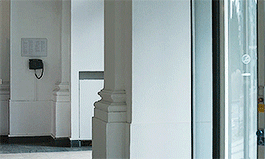










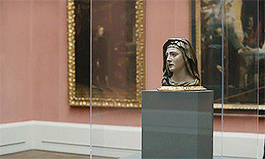
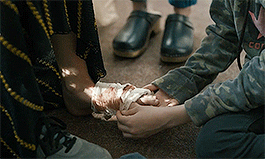
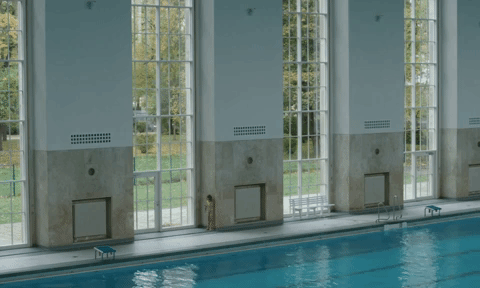











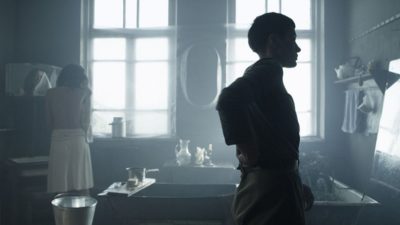


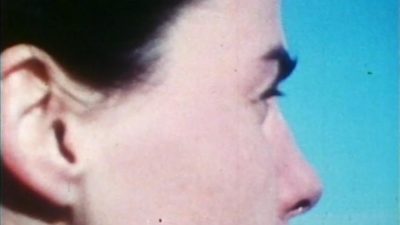

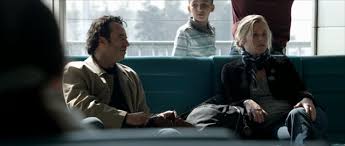


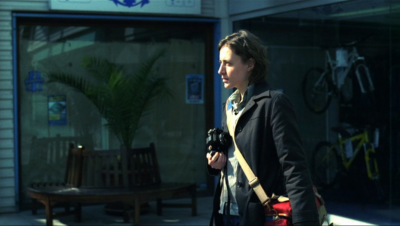

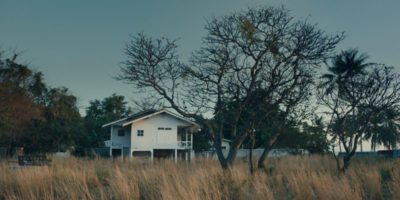

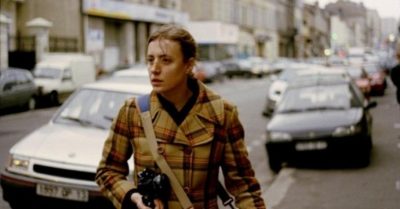
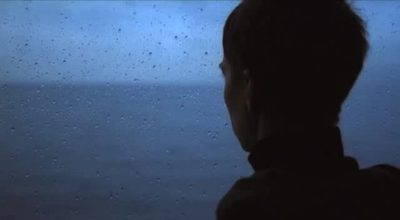
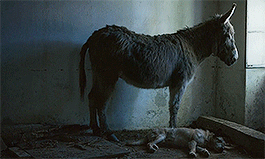


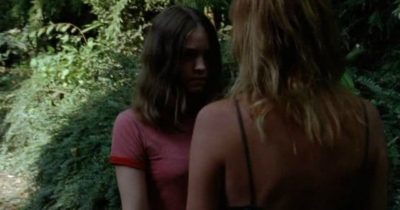
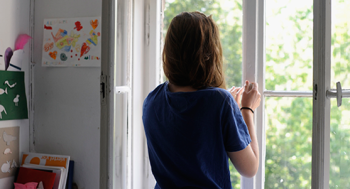
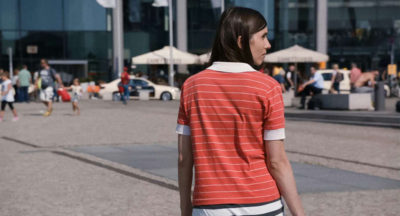
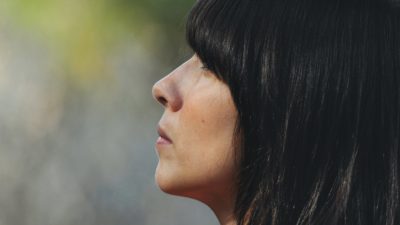
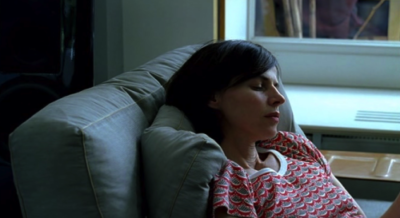
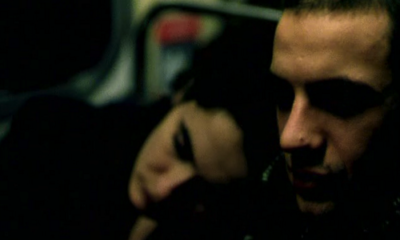

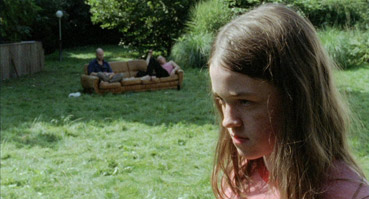
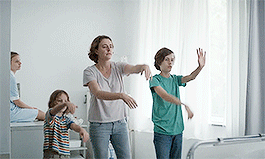
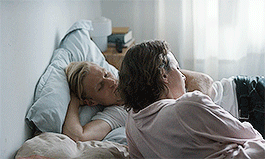
____
Further
Angela Schanelec @ IMDb
A Film in Fragments: An Interview with Angela Schanelec
LE BEAU CHANTIER D’ANGELA SCHANELEC
TIFF Critic’s Notebook 7: The Dreamed Path + Wavelengths
An Intuitive Work: Angela Schanelec Interview
Angela Schanelec : “Marseille est une ville troublante dont on ne sait où elle s’arrête”
Angela Schanelec: Narrative, Understanding, Language
Critique : Orly, un film d’Angela Schanelec
Fireflies — Issue #5: Angela Schanelec / Agnès Varda
Unschuld und Unverstelltheit
“VIP-Lounges sind eine fatale Tendenz”
Still lives in transit: movement and inertia in Angela Schanelec’s Orly
Vom Finden der verlorenen Zeit
Heft #05 – Interview: Angela Schanelec
THE DREAMED PATH, A Minimalist Masterwork
The Dreamed Path | Film Review | Slant Magazine
_____
Extras
ANGELA SCHANELEC on SPACES
Berliner Schule. Part 3: Angela Schanelec, Reinhold Vorschneider and Marco Abel
“Mis películas son preguntas que los personajes pueden responder”: Angela Schanelec
Das Kino von Angela Schanelec (extrakt)
______
Interview
by Jordan Cronk from Film Comment

Your films tend to feature very fragmented, elliptical narratives. I’m curious how they get to that point: When conceiving of the film do you start with an image, or a word—or do you indeed start with a character or concept?
It’s really different each time. There are films that I’ve made where I have had a dialogue in mind, or the beginning of a dialogue. With The Dreamed Path, there were images, a few images actually, which were a starting point in my imagination. The homeless character, Kenneth, was one of the first characters I thought about, but very soon there were those two couples.
The film jumps in time very discreetly a number of times. Can you talk about how you think about time cinematically and how you choose to depict time formally?
Well, for one, this is not a conceptual film. But nevertheless the formal aspects are very obvious, or strong—which is essential because I’m telling the story with the form. The writing process and the process of finding the images is a very intuitive process. Concerning the time, I first thought about the parts of the story set in recent times, through what is currently happening in Berlin. So while I first thought of Kenneth, this homeless man, I began to think that I’d like to see him as a young man. He’s in his fifties in the current part of the story, so that would put him in his early twenties in the first section of the film, set in the 1980s.
So you went backward to find the narrative?
Yes.
But you also decided to use the same actors for each part of the film, and thus there’s no differentiation as to their age. How did that idea develop?
Well, hopefully the viewer understands that the film starts in the ’80s and in the end we see the same persons today. If he understands that, then he understands that they also have to get older, so why do I have to show that, through makeup or some other effect? Filmmaking can be about that but it doesn’t have to be.
It seems important that each of your images carries an emotional core. Even if the viewer can’t rationally place in the image within the greater narrative, there’s something striking and self-contained about each individual shot.
I’m happy to hear you say that. That’s how I think about the images. The film is composed of images. And though you could say, well, every film is composed of images. But what does that really mean? If you take the idea very seriously, and begin to ask yourself how the image has to be, how it has to be framed and everything—this sounds very general but if you see the film, then you will understand what I mean.
As far as composing individual shots, is there any room for improvising from the actors?
No, there’s no room at all. [Laughs] The images in the film are generally prepared before. So when I’m looking for a location, or I know a location, I’m thinking about those images in relation to the location. So it’s completely prepared. In this film I was more interested in the actors’ bodies in the space or location, whereas in my prior films it is a bit different. This is the first time I’ve been interested in how the body moves and in what the body is doing. So when I depict a body I don’t want the viewer to think about the psychology of their being.
One way to do that is to only show the parts of the body that move and carry the action. That’s why there are so many shots of hands and feet, for example. If I want to show that someone is waiting, and I show only his feet, which don’t move, that is completely different from seeing the whole body. The viewers start to think about what mood the character is in as he’s waiting, because they try to read emotion in his face. So if I don’t want the viewer to do that, my only option is to not show the face.
How does that affect the actors and their process?
It’s very different and it depends on what actor is in front of me. For example, Miriam Jakob is a dancer in real life. When I was looking for actors, I asked the casting director to look for dancers because I thought it could be interesting to have someone who is very conscious of the body and their movements. And she had no problem at all when I mentioned that we may not be shooting or seeing her face. I told her that the face is part of the body, and I like to think that she never felted forced to express something that isn’t happening in that moment with her face. As for Maren Eggert, she’s been an actress for a long time. We know each other a bit better because we’ve shot together before this same way. And Thorbjörn Björnsson, he’s a singer, and this was his first film, so he was completely open to these ideas.
This manner of framing obviously brings to mind Bresson. I’ve also heard people compare the film and its narrative to the work of Claire Denis. Are you conscious of influences, cinematic or otherwise, when you’re actually shooting and composing the film?
In this film the influence of Bresson is very obvious. I’ve had a long relationship with the films of Bresson—I’ve known them since I first started to make films. The language he created is impossible to use without thinking of him. But I’ve had to make many films to get to the point where I can do parallel things without being afraid that someone will say this is a copy of Bresson, because it is something else. But it took time to feel free enough to do that.
Why did you decide to shoot in Academy ratio?
That had to do with the idea of the way I wanted to shoot, and the Academy format is very centered. From the very first rushes I was convinced that this was a good decision because it’s so clear what you want to show in each frame. How I frame a face, for example, is very different in this format. And I had the feeling that this was good for the kind of images we were going to explore.
Is there any personal significance to either of these stories?
No. I mean, it’s normal that everything you express in a film has something to do with yourself. For example, depicting this character that is homeless has to do with the fact that in my everyday life there are more and more homeless people, and I’m being confronted with this just like other people. So I’m sure this influences me when I start writing. I also have a dog, and in every one of my films there are dogs because I’m fascinated by that animal. And since I have children I wish to see children in front of the camera because I also have a lot of questions about them. So the starting point is often asking myself these kinds of questions.
Books seem to play an integral role in the film. There are many shots of both bookshelves and books.
Well, we all live with books, from the time that we’re young. One question I have is related to the experience of reading a book and being impressed or curious—what does it mean? Most people, if they read, are looking for something they can recognize or something they can learn or something that can help them. So books are important but I find myself wondering what they can influence and effect, since they’re always around us. One question I had concerning the couple in the film who live in Berlin and who go through a separation is, “What happens to the books?” A book is also something that you have in your hands when you’re alone. It’s possible to share a book, but the experience of a book is generally very personal. You’re alone with a book.
I’m wondering how much, if at all, the film is influenced by poetry? There’s a visual reference to Lawrence Raab’s “The Poem That Can’t Be Written” that stuck out to me.
Oh you saw that! That’s a very short shot. But yes, that poem is one of the most beautiful poems that I know. And it’s in English. Maybe as an American you wouldn’t recognize that Phil Hayes, who is sitting with the poem at the end of the film, isn’t German. He has a very strange accent because he’s English but living in Switzerland. So he speaks German with a Swiss and English accent, and if you’re German, you’d recognize this. So I thought it would be nice if he was reading an English poem, or at least have it in front of him. And I just really like having that poem in the film.
Another idea related to this was to think of the narrative as if it were lines of a poem. This is something I kept in mind when I was thinking about the images. At one point about, half a year before shooting, I realized that I had actually written the script in lines, and each line of the script corresponded to one shot. So that was the point when it became clear how I wanted to shoot the film. I began to notice parts that were no longer necessary.
_______________
13 of Angela Schanelec’s 16 films
__________
Music (2023)
‘In the beginning, there is fog and there is thunder. The Gods are enraged. It is a struggle to see the mountains and their trees. After some time, darkness comes; a night that would render the two figures in the landscape almost imperceptible if it weren’t for their cries. As dawn arrives, a man in red emerges, clambering up a steep incline. So far, so arduous—and seemingly doomed. Then, in the fourth shot of Angela Schanelec’s Music (2023), an ambulance and a car drive with relative ease down roads that wind through the mountains, now plain to see under the bright Grecian sun. Music continues to play out in that radiance; the fog does not return.
‘However luminous the images in Schanelec’s cinema, the fragmented, supple narratives that thread those images together often result in the films being described as opaque. Now that the German filmmaker is a sexagenarian with ten films and two Silver Bears to her name, this combination of the beautiful and the difficult no longer culminates in accusations of emptiness and pretention, but rather in admissions of wonder. Whether the past or present reviewer is in awe, bewildered or frustrated, however, Schanelec’s films seem always to pose the same problem for spectators, scholars and critics alike: ‘a problem for us,’ in the words of Marco Abel, scholar of the Berlin School. ‘How do we talk or write about her films?… How do we watch them?’ Every word is tired. How exhausted “luminous” feels. How do we approach and articulate something that is altogether new?
‘I like it when this happens, when a limit is reached. In Schanelec’s films, familiar forms of verbal and visual comprehension are found to be ineffective and we are asked to begin again, to find a path among—and not apart from—these ruins of understanding. What could be more beautiful and more difficult than this?’ — Laura Staab
Trailer
Excerpt
________________
Prague, March ’92 (2023)
‘Prompted by a seminar given by acclaimed German filmmaker Peter Nestler, Prague, March ’92 combines 16mm footage shot over the course of a week in the title city with excerpts from Bohumil Hrabal’s essay “The Magic Flute,” which considers the 20th anniversary demonstrations in Prague to commemorate the death of Jan Palach, who immolated himself in January 1969 to protest the Soviet invasion.’ — Letterboxd
the entire film
________________
I Was at Home, But… (2019)
‘The title of Angela Schanelec’s tenth feature calls to mind Yasujirō Ozu’s 1932 film “I was Born But …” (1932), but it’s not just a tip of the hat to the Japanese master. The title, cutting off a sentence half-way through, speaks to how the film operates—the gaps in the narrative, gaps between scenes, timelines and characters, how moments trail off—as the ensuing silences reverberate somehow with what’s not being said. Things don’t fit together neatly (or at all). Even time is parsed out in strange ways: it’s truncated or elongated or it stands still entirely. It’s almost like the film itself blacks out periodically, and wakes up some time later, having no idea what happened in the intervening hours. “I Was at Home, But… ” creates a space where questions are asked, but rarely answered, where things are suggested and never underlined, and every element—camera placement, music, blocking, sound design—is so deliberate that it pulls you into its vortex, and it makes you submit to its severe rhythms. “I Was at Home, But …” is a very intriguing experience, one I am still thinking about.’ — Sheila O’Malley
Trailer
Excerpt
Excerpt
________________
The Dreamed Path (2016)
‘Often associated with the first wave of the Berlin School, the films of Angela Schanelec deserve to be better known in North America. Rigorous, intelligent, and formally beautiful, her work deals with notions of chance and transience, the complexity (and frequent opacity) of human relations defying the dictates of fate. Its precise construction matched by the suggestive mystery of its bisected narrative, The Dreamed Path is Schanelec’s most moving — even devastating — film to date. The opening movement of the film introduces us to Theres and Kenneth, two young lovers on vacation in Greece in the mid-1980s (a time when there was a certain optimism about Europe’s future). Despite their passion, the couple cannot maintain their bond: pulled by the gravitational force of circumstances, and exhausted by life’s emotional and physical burdens, both retreat. With a sudden and brilliant ellipsis, Schanelec leaps 30 years into the future and into the fraught relationship of a second couple, Berlin-based actress Ariane and her anthropologist husband David, whose disintegrating marriage results in a split — and whose subsequent trajectories lead them into the orbit of the separated lovers from the film’s first half. Exquisitely shot by master cinematographer Reinhold Vorschneider in a palette that manages to be both vibrant and muted, The Dreamed Path gives a Bressonian weight to bodies as Schanelec constructs an intricate choreography among these four characters, their paths intersecting within a nominally realistic space that may be dreamed or entirely imaginary. While the narrative conundrum at the film’s centre creates much mystery, Schanelec introduces small, touching gestures of empathy and understanding (as well as traces of sly humour) that subtly destabilize the film’s tone and enhance its seductive strangeness. Its quiet beauty lined with a delicately woeful expression of loneliness and desire for a happiness just out of reach, The Dreamed Path is the work of a gifted and utterly singular filmmaking talent.’ — Andrea Picard
Teaser trailer #1
Teaser trailer #2
Teaser trailer #3
Trailer
________________
The Bridges of Sarajevo (2015)
‘Under the stewardship of French film critic Jean-Michel Frodon, the 13 films which comprise The Bridges of Sarajevo are connected by their focus on the city at various stages in the intervening period, with much slippage between 1914 and the 1990s. There is a loose theme, too, of linkage via bridges – both in actuality as well as metaphorically – that is reinforced by recurring animations bookending each short. Most were literal, conventional treatments. Others were perhaps more stylistically and thematically ambitious: Vladimir Perišić gave us an odd study of kids listening to a tape of interviews by Gavrilo Princip and his fellow conspirators, while Angela Schanelec did something similar with students reading aloud a Princip interview.’ — The Guardian
Trailer
_________
Orly (2010)
‘Schanelec allowed the Orly airport’s varied spaces to reshape what are essentially four storylines focussing on two people each, their interaction in a zone between home and somewhere else, between lives lived in one place and another but ostensibly put on hold here, if only for an hour or two. While it’s hardly a surprise that Variety’s Derek Elley has dumped on Orly or that Screen’s Dan Fainaru maintains neutrality (“Her fans will appreciate the work’s precision and visual approach, while her numerous detractors are bound to point to Orly’s dramatic shortcomings. They both may have a point but what’s certain is that, like Shanelec’s previous work (Marseille, Afternoon), Orly is looking at a future niche art house distribution and festival sidebars”), Robert Koehler’s disappointment is bewildering: “Orly isn’t much more in the end than a chain of slight scenes between people who never grow more interesting as time goes on, just more banal (maybe like a lot of fellow airplane travelers).” The full original title is Orly, Poem 1-4. Whether or not the characters are banal (and I don’t believe they are) or occasionally say banal things (don’t we all), they and the things they say are, to play on the analogy suggested by that original title, words and phrases within an overall structure. So, too, is the intelligent camerawork by Reinhold Vorschneider. And the two texts that are read, one onscreen, the other off. And the photographs in the apartment where Theo’s made that call, mementos alongside a cover for a single, “Love Will Tear Us Apart.” Many have noted the leave-taking in Orly. The funeral, Sabine’s leaving Theo, the life-changing decisions. In his interview with Schanelec for die taz, Ekkehard Knörer asks her about the ending in which the entire airport is evacuated. “Yes, it’s true,” she says, “everything moves toward emptiness.” In Der Tagesspiegel, Christina Tilmann wonders out loud if Orly may have been shaped by the loss in 2008 of Schanelec’s partner, theater director Jürgen Gosch. An open question. In the end, as Sabine evacuates the airport along with everyone else, she finds herself paired again — with a stranger. Sabine asks a question. The stranger doesn’t respond. The Germans have a saying: Keine Antwort ist auch eine Antwort. No answer is also an answer.’ — David Hudson, mubi
Trailer
Excerpt
______________
Afternoon (2007)
‘After a long absence, the actor Irene visits her lakeside house where her brother Alex and her son Konstantin live. It is a hot summer. Konstantin’s girlfriend Agnes is also there, spending the summer break at her family’s house next door. Konstantin and Agnes grew up together. Agnes is now at university; Konstantin writes and hasn’t left his home by the lake. But when they see each other again, things are no longer the same, and every doubt is mercilessly exposed. Into this confusion enters Irene. Mother and son’s common past repeats itself as a futile struggle for recognition, fought with irony and aggression. The relationship is over, but the loss is unbearable. Irene summons her lover for consolation. Konstantin goes to pieces. But his girlfriend takes a liking this lover; he eases her heart. He liberates her a little, and she begins to forget Konstantin. Based on Chekhov’s The Seagull.’ — Cineuropa
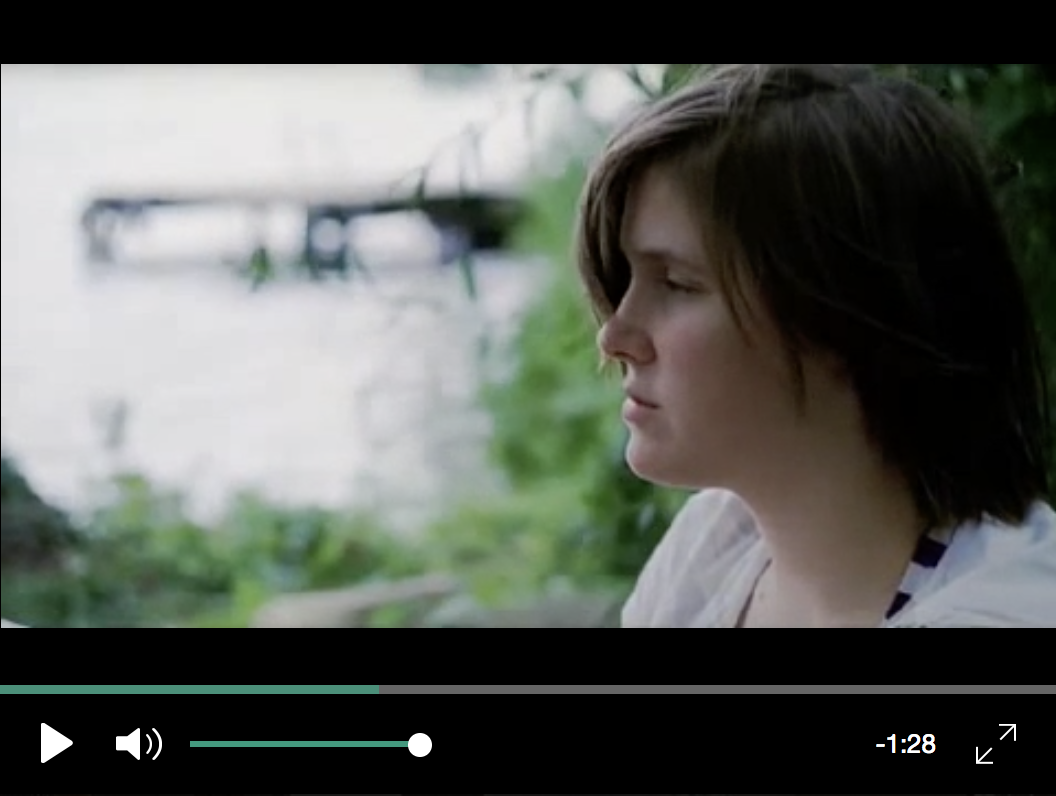
Watch the trailer here.
__________________
Passing Summer (2001)
‘The original German title of “Passing Summer” translates as “My Slow Life,” and they don’t come much slower than this latest study of emotional ennui by writer-director Angela Schanelec. Film is a series of encounters between a group of Berlin friends, relations and acquaintances during one summer. Two young women sitting in a café on a summer day. Situations found everyday a thousand times over. But what happens when you try to depict this normality?’ — collaged
Excerpt
___________________
Places in Cities (1998)
‘Like the other two films I’ve seen from Schanelec, Places in Cities remains largely formal in its technique but takes away most obstructions of narrative structure. By doing this it reveals an underlying ambiguity, another kind of obstruction entirely, and from that comes a familiar strangeness. It is the strangeness of recognizing the moment. Places In Cities is weighed and balanced by its ellipses and contrasts. Its burdens are heavy; it is light as a feather; it is a picture cast in hard winter shadows, gently lit by the warmth of a desk lamp. If Schanelec is trying to tell us anything of importance here it is to just keep watching, keep looking, keep breathing.’ — Ben Umstead

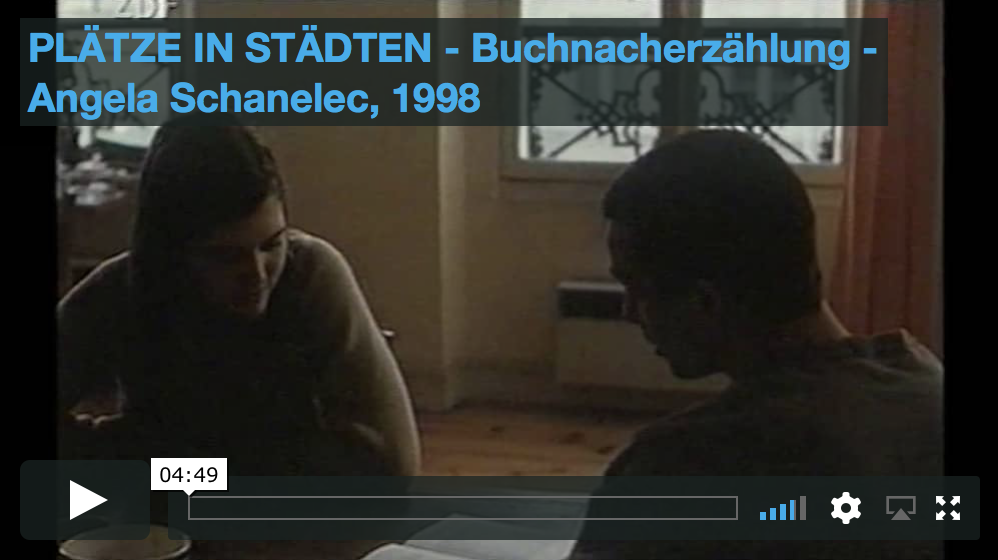
_______________
My Sister’s Good Fortune (1995)
‘A variation on the problem of triolism made with striking stability of style and a great feeling for mise-en-scène. Angela Schanelec demonstrates in this film an impressive mixture of stylised camera angles and realism, by filming taut and geometrically in simple interiors and existing locations. Her self-confidently designed, naturally acted everyday drama made German critics compare it with the greats from film history. Protagonist is the fairly unsuccessful free-lance photographer Christian. A sober, surly and melancholy personality who is not very happy in his relationship with Ariane. He is attracted to Ariane’s sister Isabel (a striking role by film-maker Angela Schanelec herself). Not very sure where he’s at, he decides to live with Isabel and tries to avoid Ariane. But he hasn’t really chosen for one or other of the sisters: he continues to see Ariane. Christian does not have much to spend so he often has lunch with his friend Richard who is a painter. Richard has a wife and children and seems to lead the normal life that is out of reach of Christian. But it is Richard who suddenly is able to choose another life. Christian, Ariane and Isabel are not able to make such a clear choice. They hope it is a temporary crisis in their relationship and that the future will be without problems.’ — IFFR

_______________
I Stayed in Berlin All Summer (1994)
‘The director herself plays an aspiring writer, who we see with a lover, and with a neighbor who gives feedback on her writing and invites her to join him in a rowboat.’ — The AV Club
the entire film (no subtitles)
____________
Far Away (1992)
‘This portrait of a young woman’s urban alienation is Schanelec’s lone black-and-white film.’ — Film at Lincoln Center
the entire film
_____________
Lovely Yellow Color (1991)
‘This early, Godard-inspired structuralist sketch analyzes an empty apartment by way of a continuous pan as Schanelec’s voice-over narration recounts her uneasiness with her new roommate.’ — IMDb
the entire film
*
p.s. Hey. ** Randi, Hi. Thanks for coming in and saying that. ** Charalampos, Hey. Glad you liked Filip’s poem too. I don’t think English not being your first language is a problem, no. I think that just gives you a different access to the language and potentially a freshness to its construction. It’s only a problem if it bothers you, or if you feel like you can’t do what you want. Hugs from Paris central. ** Dominik, Hi!!! Metaphorical, yes, probably, right? My leg is much better. Not perfect, but hopefully getting there. The Versailles trip was good. Zac and I went out there to see our friend the great photographer Estelle Hanania, who was the set photographer on RT. She lives there and literally right next to the entrance of the Chateau which eats up all over her windows charmingly. How was your weekend? Can’t argue with the task you gave love, obviously. Love making every item on every shelf in every store festively gift wrapped and ready to go under a Xmas tree, G. ** Uday, Hi. Congrats! I think Wojnarowicz is a fantastic writer. I’m not as interested in his visual art, although I think some of it is great, and I really like his films. He and I were friends. Are you especially into his work? Of course you can draw me. I mean, that would be a total honor. How do I facilitate this drawing if you need me to do so. Wow, thanks for wanting to. Versailles was nice. It was weird to go there and not go to the Chateau since that’s the only reason people who don’t live there ever go there. ** Steven Purtill, Hi, Steven! Your work in/on Max’s book looks fantastic. I’m awaiting my copy to get a full look. No, we are still seriously lacking needed funds and in a bit of panic that our producer is going to fuck everything up by not coming through to pay the people we’re already working with. Endless drama, this film. Yes, I most definitely want to hang out again. Let’s figure out how we can. xo. ** Bill, Cool. I saw pix from the SPT event on Facebook. Looked fun. I was surprised that Dodie wasn’t reading there. Et Al Gallery, no. Is it online? I’ll have a look. Thanks for the tip, buddy. ** Justin, My pleasure, sir, and my weekend wasn’t bad, and how and what was yours? ** _Black_Acrylic, Hi, B. I think AS is single-handedly trying to start a horror lit phenom beginning with Max’s tome. Great, great, get that most extremely promising prose work to reality, rausch! ** Misanthrope, Oops, did it topple yet? Oh, no doubt you’ll make it through. Warrior, that’s you. If it was 70 degrees and rainless every second of every day you’d get complacent. Word. ** Steve Erickson, Kanya, ugh. The sound mix guy has been setting up the project files for a week, and today we start the actual sound mix. Really looking forward to it. So, that and locking down the schedule for the color grading, I think starting in two weeks. And putting as much pressure as possible on our fuckhead producer to raise funds because he still hasn’t raised a penny and the people we’re working with are impatient to get paid. Trying to ward off total disaster, in other words. It never ends. Thank you for asking. I don’t know that Ameur-Zaimache film, but of course I’ll look it up. Thanks. ** ellie, Hi, ellie! I’m doing okay. Trust me, we would do anything not to be saddled with our producer. And, no, no miracles, just one disaster after another. Yeah, your experiences with Burden are similar to mine. But of course I’m old enough to have found his work before he moved into sculptures. I feel the same about my stuff. I have to feel some combination of really uncomfortable and excited to actually make what I’m thinking about into thing. I’m excited about what you’re working on. Settled, good. My weekend was nice, actually, not headline news-providing, but pretty okay. How is your week starting/looking? ** seb🦠, Hey, hey! Things are okay here. Oh, shit, you got the winter flu or cold or whatever. It’s coursing around over here too, felling folks left and right. Eating better is a golden rule, I think, right? I hope you’ve woken up this morning feeling …. what’s the right word … sprightly! How are you? ** Darby 🐶, I haven’t gotten my copy yet, but it does look really good, no? I don’t know if they’re Hispanic. This is their first published work, or in book form at least. So they’re mysterioso. I didn’t actually enter the Chateau, just looked at its entrance, and Versailles itself is just kind of a regular looking French town. I always use a planner/schedule doc. It helps immensely. Yep, do everything you can to proceed creatively and humanly under your current circumstances. That’s how you, like, win. Weekend was okay on my end. Is your week luring you into it? ** Nick Toti, Howdy Nick! Thanks for the trailers! I’m zooming out the door to the sound mixing studio right now, but I’ll imbibe them upon my return later. Everyone, The most excellent and utterly unique filmmaker Nick Toti has trailers newly available for two current and impending films by him, and you are strongly urged to get a look-see now before the world jumps on board. So … here’s the trailer for “It Doesn’t Get Any Better Than This” ‘(the horror feature I finished last year that’s currently playing festivals)’, and here’s the trailer for “The Complete History of Space/Time (Destination Milwaukee)” ‘(the long-gestating Sigmund Snopek documentary I recently finished and am working toward premiering)’. Have at them, everybody. Thanks again, Nick! ** Right. Today you get a Day dedicated to the brainy filmmaker Angela Schanelec whose work you may or may not already know? See you tomorrow.




 Now available in North America
Now available in North America 
Hi!!
I haven’t seen any of Angela Schanelec’s films, but I have the feeling I’d like them. The stills and GIFs really resonate with me somehow. Thank you for this post!
I’m so glad to hear your leg is doing better! Or that you’re doing better because your leg doesn’t hurt as much anymore. Your friend’s apartment/the view from her apartment sounds magical!
We actually left our apartment for a few hours on Saturday, haha, because we went to Löwenherz, which is a not-so-huge but very, very rich queer bookshop in Vienna. I bought three rare “Queer as Folk” books. Not too surprisingly, I spent the rest of the weekend reading. I have no complaints.
Oh, love starts his Christmas preparations early this year! Not a bad idea, I have to say. Love making asking favors easy, Od.
Hi Dennis, I didn’t read everything but I’m cited on the French wikipedia page defining reading: is that funny? (1)
2: Did anyone clue you in on what the radical winemakers are up to in Paris, because I received an email — not from Zac. 🙁
Angela Schanelec is a new name to me and I am definitely intrigued! Her mission to elevate the everyday into the cinematic is something I can get behind. I now have ‘I Was at Home, But’ on my DVD rental saved list and hope they make it available soon.
This weekend saw football hooliganism make a big comeback here in the UK. My auntie’s partner was at the West Brom game yesterday which was on the TV. He left early in disgust, but I watched numerous coked-up drunken young men brawling in the stands. Speaks of a bitter, angry country and is a throwback to the bad old days of the 80s.
I’m into Wojnarowicz’s work as much as I am into a lot of other people’s. I don’t mean that to sound cruel or dismissive, but merely to say that I am passionate about it in a sort of voracious way. I don’t think I’m especially impassioned about anybody right now (save for you, Premchand, Sigrid Nunez and Susan Sontag {an odd quarter, I know}). I think it’s so cool that you were friends; you seem to know all of these interesting people including, apparently, a professor of mine. I could email the drawing to you! Also I think doing Versailles without doing the palace is the perfect way to do it. Not that I’ve been to France (I’d like to save up for it some day), but just as a general principle I suppose. Hope your leg is doing better (so odd to talk about an organ separately).
Dennis, It’s funny you say “Word” there. I’m having so many problems with Word now. I’ve got OneDrive, have had it since I got this computer a few years ago. Online backup. No worries, actually a good thing. But…BUT…now, every time I create a new doc or write in an old one and save it, OneDrive changes the file name and many times replaces the text with all these weird symbols. If I cut it off, I lose everything on my PC. It’s like OneDrive is now my PC. Ugh. And it does what it wants. I’ve looked online but all the solution just fuck everything up and I have to go back to the start. I’ve since lost all my music and pictures. Bleh.
A more benign celebrity popped up in last night’s dream. In it, I was traveling through Canada, and while I met real-life friends, it was also very important that I went to a Carly Rae Jepsen concert for some reason.
RIP Cinema Scope magazine. Lasting 25 years is a great run. I just wish a similar project was likely to emerge.
Good luck with sound mixing! I hope you can finish it in the next 2 weeks. Here’s to Fuckhead winning the lottery.
I looked up neurologists on my insurance plan. I want to start calling them for an appointment about my brain fog.
How’s your leg?
Dennis, My weekend was pretty low-key. My bf and I watched a film called Society of the Snow. A brutal yet hopeful film. Sorry to hear about the funding issues on Room Temperature. If only money didn’t get in the way of art. Wishful thinking, I guess. Angela’s work looks interesting. I will have to check out some of her films.
Whoa! Yesterday we watched Ken Russell’s ‘The Devils.’ Damn, it’s pretty amazing. I mean production design by Derek Jarman and score by Peter Maxwell Davies – it’s nuts! There’s also in interesting BBC doc about the making of the movie, which tells the tale of it’s censorship and controversy. The ‘Rape of Christ’ scene that was altered for the release is pretty cool and